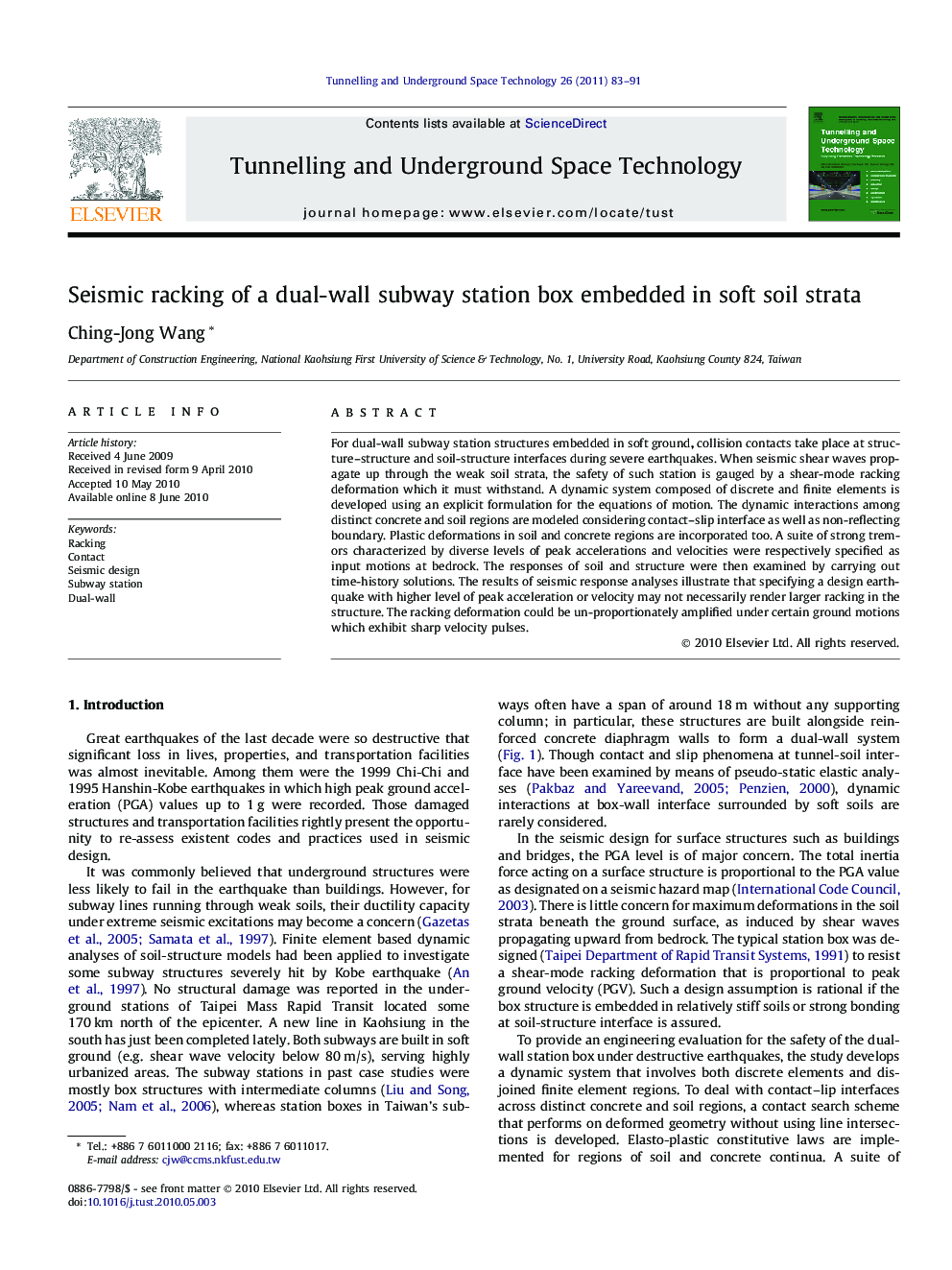| Article ID | Journal | Published Year | Pages | File Type |
|---|---|---|---|---|
| 311953 | Tunnelling and Underground Space Technology | 2011 | 9 Pages |
For dual-wall subway station structures embedded in soft ground, collision contacts take place at structure–structure and soil-structure interfaces during severe earthquakes. When seismic shear waves propagate up through the weak soil strata, the safety of such station is gauged by a shear-mode racking deformation which it must withstand. A dynamic system composed of discrete and finite elements is developed using an explicit formulation for the equations of motion. The dynamic interactions among distinct concrete and soil regions are modeled considering contact–slip interface as well as non-reflecting boundary. Plastic deformations in soil and concrete regions are incorporated too. A suite of strong tremors characterized by diverse levels of peak accelerations and velocities were respectively specified as input motions at bedrock. The responses of soil and structure were then examined by carrying out time-history solutions. The results of seismic response analyses illustrate that specifying a design earthquake with higher level of peak acceleration or velocity may not necessarily render larger racking in the structure. The racking deformation could be un-proportionately amplified under certain ground motions which exhibit sharp velocity pulses.
